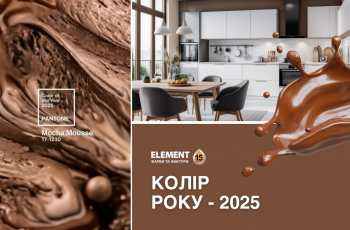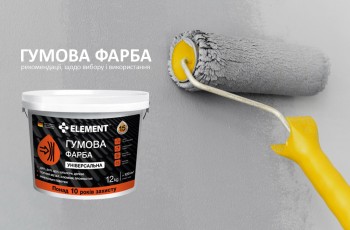Wood in construction: how to protect the material from damage, rotting and destruction?
Are you planning a renovation and want to use wooden materials? Let's figure out how to effectively protect them from destruction.

Wood is a natural, beautiful and durable material that is great for working with various design trends from Provence to loft. However, without proper protection, wood can be seriously damaged by sunlight, rain, pests, fungal infections, moisture or frost. Proper processing of this material allows you to significantly extend its service life and avoid destruction. Therefore, the use of antiseptics for wood processing is a necessity that will protect your repair and increase its service life.

Types of protective materials for wood
There are 2 main types of protective materials for wood - oil-based products and antiseptics that form protection on the surface. Let's consider their advantages and differences.
- Oil-based products are applied to the surface and are literally absorbed into the structure of the wood. These materials work in the surface structure of wood, providing a weather-resistant surface.
- Antiseptics, in turn, are applied to the top layer of wood and create a protective barrier. In addition, modern antiseptics for wood, such as ELEMENT AQUA ANTISEPTIK or VIVACOLOR VILLA LASUR, create a decorative effect, emphasizing the structure of the wood and giving it the desired color, for example, a shade of oak, walnut, rosewood, teak or wenge.
The modern antiseptic for wood ELEMENT is flexible and durable, it protects the wooden surface from negative factors, while preserving the structure of the wood. In addition, it is very easy to apply, as it does not form unpleasant stains on the surface.
Antiseptics for wood: types and features
- Water-soluble antiseptics are environmentally friendly materials that do not contain toxic substances and are well suited for interior work. Such antiseptics have almost no foreign odors.
- Organic antiseptics - penetrate deeper into the structure of the wood, thereby providing maximum protection. These materials are great for outdoor use.
- Combined - universal products containing flame retardants (fire retardant additives) or other additional components.

Why is wood treatment with antiseptics necessary?
Without antiseptic treatment, wood is quickly exposed to the negative effects of the environment. Using a high-quality antiseptic is a guarantee of protecting your wooden surfaces from:
- formation of fungi, mold and mildew;
- damage by insects and wood beetles;
- premature damage to wooden structures;
- excessive moisture absorption, which can lead to its deformation.
The main thing is to choose the right antiseptic that is suitable for your tasks and guarantees a long-term effect. This approach to choosing materials minimizes the need for frequent repairs.
Protecting wood from insects
One of the biggest risks to wood is insect pests that can destroy it from the inside. These insects include:
- wood beetles, such as grinders, bark beetles or barbels;
- ants;
- termites.
They gradually erode the structure of the material, making it brittle and unusable. ELEMENT AQUA ANTISEPTIK or the combination VIVACOLOR VILLA PROTEKT + VIVACOLOR VILLA LASUR effectively prevent wood damage by pests, creating a reliable protective barrier. Additionally, before starting construction work, it is worth checking wooden structures for the presence of specific holes or dust, which may indicate the presence of insect infestation.

Preventing wood rot
Rot occurs due to excessive moisture and the development of fungi. Wood that is constantly exposed to moisture or in contact with the soil is at risk.
To prevent rot, it is necessary to:
- Use antiseptics that penetrate deep into the structure of the tree and ensure the creation of a reliable protective barrier.
- Use hydrophobic agents that reduce moisture absorption or antiseptics with the function of protecting against moisture.
It is important to carefully treat vulnerable areas with antiseptics, namely the ends of wooden boards and joints.
How to apply an antiseptic correctly?
To make the antiseptic as effective as possible, it is worth following the application technology. Let's consider the main points that you should pay attention to.
- Surface cleaning. Thoroughly clean the wood from the remnants of the old coating, as well as dirt and dust.
- Dry surface. Before applying the antiseptic, completely dry the wood. Its humidity should not exceed 20%.
- Priming. It is necessary to prime both new and reused wood. The exception is the use of an antiseptic that states that it can be used without a primer.
- Tools. For high-quality application of the antiseptic, use brushes, rollers or paint sprayers.
- Drying time. Follow the manufacturer's recommendations regarding the drying time between layers of material. On average, antiseptics are applied to the surface in 2-3 layers.
Follow these simple recommendations and your repair will delight the eye with freshness for a long time.

Antiseptics for modern interiors
High-quality wood treatment is an important stage of repair work, because the durability of wooden structures depends on it. Using wood antiseptics from the ELEMENT and VIVACOLOR brands, you will reliably protect the material from the effects of weather conditions, moisture, pests and fungi.
You can buy wood antiseptics today in the ELEMENT paint and texture network, in EPICENTER construction hypermarkets, on the ROZETKA website and in the elementpro.com.ua online store. Need advice on choosing materials for woodworking? Call 38 (067) 563-18-88.
Protecting wood is the key to its beauty and functionality for many years!


